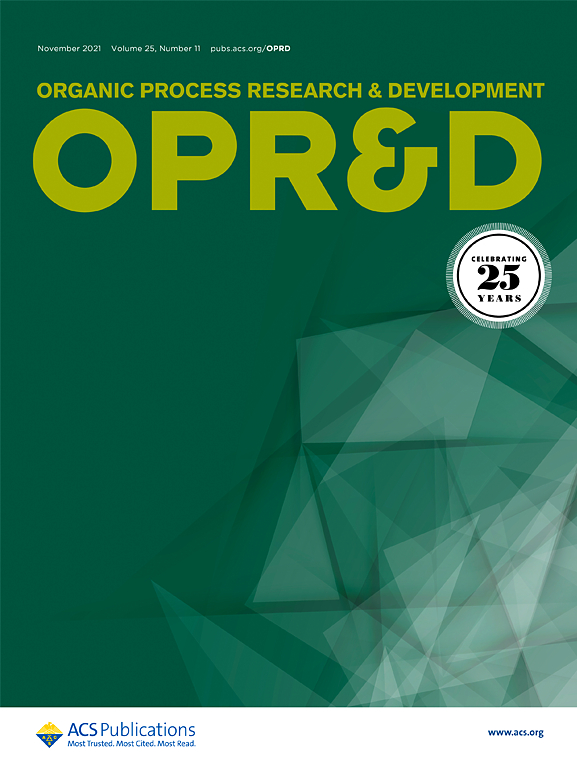Development of a Scalable Process for the Synthesis of Cyclopropyl-Methyl-Proline with Complex Stereochemistry: A Key Building Block of Factor D Inhibitors
IF 3.1
3区 化学
Q2 CHEMISTRY, APPLIED
引用次数: 0
Abstract
The development of a scalable process for a complex intermediate featuring a chiral, quaternary cyclopropane moiety presented significant challenges. We report two generations of synthetic strategies appropriate for the respective stages of development. The initial approach utilized a stereoselective Simmons–Smith cyclopropanation of (R)-pyroglutamic acid ester, which predominantly yielded the undesired stereoisomer. To circumvent this issue, we implemented a strategy that combined isomerization, recycling of the undesired isomer, and selective crystallization to improve the yield of the desired product. An important insight was that the Simmons–Smith cyclopropanation exhibited opposite stereoselectivity with a benzoyl ester of a prolinol substrate, resulting in the desired stereoisomer as the major product. This understanding enabled the development of a second-generation process that facilitated the large-scale production of the targeted intermediate, thus supporting the advancement of clinical trials.

开发具有复杂立体化学结构的环丙基甲基脯氨酸的可扩展合成工艺:因子 D 抑制剂的关键构件
开发具有手性季环丙烷分子的复杂中间体的可扩展工艺面临巨大挑战。我们报告了适合各自开发阶段的两代合成策略。最初的方法是利用 (R)- 吡咯谷氨酸酯的立体选择性 Simmons-Smith 环丙烷化反应,这种反应主要产生不需要的立体异构体。为了解决这个问题,我们采用了一种结合异构化、回收不需要的异构体和选择性结晶的策略,以提高所需产物的产量。一个重要的发现是,Simmons-Smith 环丙烷化反应与脯氨醇底物的苯甲酰基酯具有相反的立体选择性,从而使所需的立体异构体成为主要产物。有了这一认识,就能开发出第二代工艺,促进目标中间体的大规模生产,从而为推进临床试验提供支持。
本文章由计算机程序翻译,如有差异,请以英文原文为准。
求助全文
约1分钟内获得全文
求助全文
来源期刊
CiteScore
6.90
自引率
14.70%
发文量
251
审稿时长
2 months
期刊介绍:
The journal Organic Process Research & Development serves as a communication tool between industrial chemists and chemists working in universities and research institutes. As such, it reports original work from the broad field of industrial process chemistry but also presents academic results that are relevant, or potentially relevant, to industrial applications. Process chemistry is the science that enables the safe, environmentally benign and ultimately economical manufacturing of organic compounds that are required in larger amounts to help address the needs of society. Consequently, the Journal encompasses every aspect of organic chemistry, including all aspects of catalysis, synthetic methodology development and synthetic strategy exploration, but also includes aspects from analytical and solid-state chemistry and chemical engineering, such as work-up tools,process safety, or flow-chemistry. The goal of development and optimization of chemical reactions and processes is their transfer to a larger scale; original work describing such studies and the actual implementation on scale is highly relevant to the journal. However, studies on new developments from either industry, research institutes or academia that have not yet been demonstrated on scale, but where an industrial utility can be expected and where the study has addressed important prerequisites for a scale-up and has given confidence into the reliability and practicality of the chemistry, also serve the mission of OPR&D as a communication tool between the different contributors to the field.

 求助内容:
求助内容: 应助结果提醒方式:
应助结果提醒方式:


